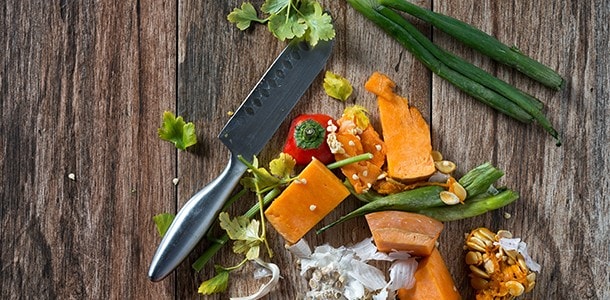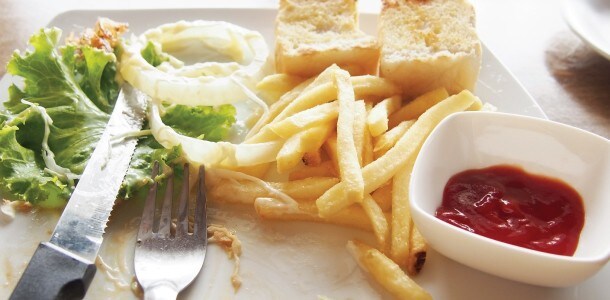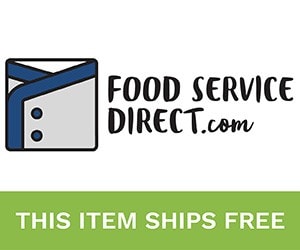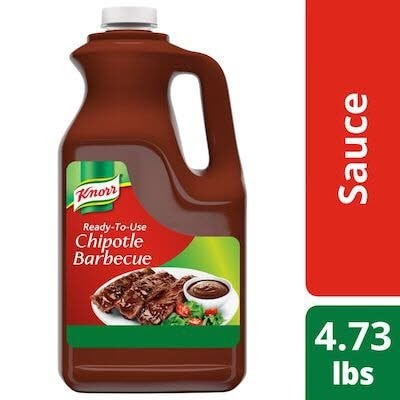Food Waste Reduction Tips
The Real Price of Food Waste and Tips to Reduce Your Losses
Food waste is a global problem that needs to be addressed, not only for environmental reasons, but also because of the economic implications it has on your restaurant. The situation is becoming top of mind for consumers in their own kitchens as well as when they’re dining away from home. The numbers tell the story:
- It’s estimated that 70 billion pounds of food is wasted in America each year.1
- The 2014 Food Waste Reduction Alliance survey found that 84.3% of unused food in US restaurants ends up being disposed of, 14.3% is recycled and just 1.4% is donated.2
- It’s estimated that 4-10% of food purchased by restaurants and foodservice operations is discarded before ever reaching a guest.3
Types of Waste & Tips for Reduction
Effective food waste management can be summed up by the three R’s: Reduce, Reuse and Recycle. These three R’s are evident in several stages of the kitchen process. Below we’ve outlined three types of waste and have included tips to help you manage and reduce waste in each category.
Preparation Waste - Several things can be done to reduce waste during preparation:
Effective Purchasing:
- Try not over-order food: Only order the minimum amount required for a period to avoid unnecessary spoilage.
- Cook seasonal: Ingredients that are out of season have made a longer journey to your kitchen and have a higher risk of spoilage.
- Only buy bulk if it fits with your demand/are non-perishable.
- Consider frozen, dried, bottled or tinned goods as opposed to fresh where a comparable quality can be achieved.
- Perishable items should be used throughout the menu so that they are not wasted.

Production Planning – reduce and reuse
While most waste in restaurants is generated by the end product — cooked food that can't be donated or re-purposed — there are BOH steps that minimize waste.
- During the production phase, waste occurs when ingredients are not prepared carefully (e.g., excess trimming of meat, vegetables, or fish) or ingredients that can actually be used are discarded (e.g., onion trimmings, carrots peels and parsley stems can enhance any soup or stock). As a result, a lot of costly waste can be reduced and reused during the production stage in most kitchens.
- Meat trimmings can be used for a pâté, a filling or in an appetizer format. You can even go are far as rendering the fats from the meat for other purposes.
- Cook smaller batches of pre-prepared staple food to make sure you don’t over order.
- Plan carefully. This optimizes your labor efficiency and reduces waste.
- Be flexible and reactive: tailor your mise en place to bookings, weather, holidays, etc, increasing and decreasing par levels accordingly.
- Avoid exceeding par stock levels and overdoing the mise en place, as often this leads to wasted stock and effort.
Spoilage Waste
How you store your ingredients plays a large role in reducing waste during storage. Use the ABC strategy to optimize the space of your storage:
- Category A: products that have a high turnover but relatively little pick locations.
- Category C: products that will be stored a lot longer than products in group A. They have a low turnover and take lots of space in the store room.
- Category B: products in between A and C according to turnover and pick frequencies.

When you use these categories to classify your products you can group your storage room and fridge into three zones. Zone A will always be closest to the door, then B, then C. Improved storage using this model can save you up to 60% of your time.
Portioning & Plate Waste
Smaller plate portions certainly make it easier to reduce waste, but they don’t always fit in with restaurant concepts. However, accurate portion control is key to reducing waste and increasing profitability so that over-portioned meals don’t end up in the garbage.
- Giving your guests control over how much they want to eat is a great way to start reducing waste. Consider offering dishes in different serving sizes and train staff to fully understand the benefits of the offer for both the business and the customer.
- See if you can offer second helpings on side dishes similar to the concept of bottomless soft drinks. This saves you from serving too much on the first pass, but still gives guests the feeling they’ve gotten their fill. Educating your FOH and BOH staff of the benefits — as well as the guests themselves — will be key in making this practice successful.
- A careful eye on sales tracking will help set production levels so you can be prepared for rushes and slow periods.
- Train staff to monitor plate waste to engage your staff in waste reduction efforts. This helps your team register what comes back from the restaurant as plate waste so that proper adjustments can be made to alter the portioning. This will also tell you which dishes may be underperforming so that you can make additional adjustments to your menu.
- Consider composting. Chef Einav Gefen is a seasoned culinary executive with UFS and says, “Compost is the best way to repurpose waste. It takes some behavior change but can be easily managed in house.” Many restaurants use dedicated garbage cans and compost cans back of house to create a simple compost system. She goes on to suggest reaching out to local environmental groups who often collect compostable items from restaurants.

With these tips and diligence in your kitchen, you can do your part to help reduce food waste to benefit the environment—and your bottom line. Plus when you get guests involved in the effort, you can go far in improving your brand’s equity. Look to startup companies and tech partners for support in your food waste reduction efforts. There are many powerful apps out there that can help along the way.
1 Feeding America, “Food Waste in America.” http://www.feedingamerica.org/about-us/how-we-work/securing-meals/reducing-food-waste.html
2 Food Waste Alliance, “Analysis of U.S. Food Waste Among Food Manufacturers, Retailers, and Restaurants.” 2014 http://www.foodwastealliance.org/wp-content/uploads/2014/11/FWRA_BSR_Tier3_FINAL.pdf
3 National Restaurant Association, “Measuring Food Waste Can Bolster Your Bottom Line.” http://www.restaurant.org/Manage-My-Restaurant/Operations/Back-of-House/Measuring-food-waste-can-bolster-your-bottom-line











